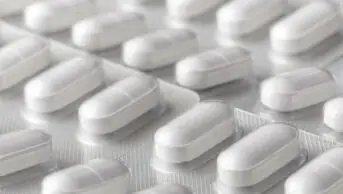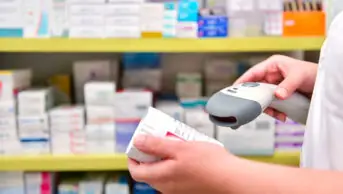
Brain light / Alamy Stock Photo
There has been negative publicity in the national press about drug manufacturers increasing the price of some medicines significantly: so called ‘price gouging’. These increased prices are then passed on to the NHS, and lead to headlines quoting multi-million pound figures.
A recent high profile example in the UK is the massive £90m fine issued by the Competition and Markets Authority (CMA) to Pfizer and Flynn Pharma for increasing the price of anti-epileptic drug phenytoin by 2600%[1]
. On 16 May 2017, the European Commission announced a formal investigation into Aspen Pharmacare following information that the company had “imposed very significant and unjustified price increases” for five drugs (chlorambucil, melphalan, mercaptopurine, tioguanine and busulfan).
In summer 2016, Mylan — a large generics and specialty pharmaceutical company that makes the EpiPen Auto-injector, containing adrenaline used to treat anaphylaxis — announced the launch of a generic version in the United States priced 50% lower than the branded EpiPen list price[2]
. Mylan says the generic will be identical to the branded product, including device functionality and drug formulation.
One can only speculate as to the real reasons for this launch, but even Heather Bresch, chief executive of Mylan, said at the time: “The decision to launch a generic alternative to EpiPen is an extraordinary commercial response. However, because of the complexity and opaqueness of today’s branded pharmaceutical supply chain and the increased shifting of costs to patients… we determined that bypassing the brand system in this case and offering an additional alternative was the best option.
“Generic drugs have a long, proven track record of delivering significant savings to both patients and the overall healthcare system,” she added[2]
.
However, Mylan had already faced criticism in the United States following EpiPen’s huge price increase after the company acquired the product in 2007[3]
. In fact, the US House Committee on Oversight and Government Reform has been seeking documents on EpiPen pricing — including those relating to EpiPen sales revenue since 2007 — manufacturing costs, as well as the amount of money the company receives from US federal government healthcare programmes.
Price gouging is receiving increased attention in the media, no doubt because of the current financial pressures on the NHS
As a result of mounting pressure, in October 2016, Mylan said it would agree to pay $465m to the US Department of Justice and other government agencies in connection with claims involving the Medicaid Drug Rebate Program. The program requires drug manufacturers to have a national rebate agreement with the Secretary of the Department of Health and Human Services in order for states to receive Federal Medicaid coverage of their products[4]
.
Complexities allow for price gouging
Although price gouging is not new and not restricted to the UK, it is receiving increased attention in the media, no doubt because of the current financial pressures on the NHS and the realisation that drug manufacturers are making massive profits from this practice.
The manufacture, supply, pricing and payment of drugs is complex and varies considerably from country to country. In the UK, the government (through the Department of Health [DH]) pays the vast majority of healthcare bills, whereas in France, patients are frequently required to pay (and then reclaim the costs from the government). And in the United States, a high proportion of healthcare costs are paid for through private insurance companies. The complexity gives rise to the opportunities for ‘price-gouging’ to occur.
Generally, all medicines supplied in the UK must hold a product licence. Obtaining a product licence is complex and time consuming; it involves submitting a dossier to the Medicines and Healthcare products Regulatory Agency (MHRA), the UK’s medicines regulator, containing considerable detail not only of the formulation of the product but also, for example, of analysis work (including checks on samples and storage conditions). After the application has been submitted, the MHRA can take more than 18 months to approve it.
Medicines generally start their commercial life as patented pharmaceuticals, which are sold under a brand name rather than by their generic name. However, once the patent protection for a branded product expires, often ‘generic’ companies enter the market, selling their own competing or equivalent generic product (for which they will not be able to use the existing brand name, and for which they will have to apply for their own marketing authorisation). The price of these generic products is usually significantly lower than the price the branded product was sold for. Historically, there has been a cultural divide between the ‘generics’ and the patent-owning pharmaceutical companies carrying out extensive R&D (typically ‘big pharma’ companies such as Pfizer).
The complexity of the pharma market gives rise to the opportunities for ‘price-gouging’ to occur
Once a product is placed on the market, the DH has to set the price at which NHS pharmacies will be reimbursed for supplying that product. The reimbursement prices are set out in the Drug Tariff
.
Published monthly, the Drug Tariff sets the price for individual drugs directly or by reference to the list price of suppliers or manufacturers. Thus a drug which is only manufactured and sold by one company is most likely to have a reimbursement price that reflects that company’s pricing alone.
However, this does not give drug companies a free hand to set whatever price they choose, even where they are the only supplier.
Pharmaceutical price reimbursement scheme
Around 90% of drug companies supplying into the UK market are members of the Association of the British Pharmaceutical Industry and, accordingly, opt in to the DH’s Pharmaceutical Price Reimbursement Scheme (PPRS).
Essentially, companies opting in to the PPRS must submit an annual financial return to the DH and, broadly, if their profits exceed a certain level, the company must repay the excess or reduce their prices. Generally, no scheme member may increase the NHS list price of any product covered by the scheme without the DH’s prior approval, and the DH will not agree to an NHS list price increase unless the scheme member’s estimated and forecast profits are below specified limits calculated by the DH.
The combined effect of the Drug Tariff and the PPRS is therefore to control what can be charged by PPRS members for drugs and other products supplied on prescription (and paid for by the DH). If a company puts prices up on one of its prescription drugs (which are usually branded, rather than generic), it will lower the prices on another in order to keep within the PPRS limits.
However, the PPRS does not cover all medicines or all manufacturers. This enables pharmaceutical companies in certain circumstances to set and alter a drug price in a manner which is out of line with what has been charged historically or what might be expected to be charged in a normal competitive market.
The more factors making it less worthwhile or more difficult for a competitor to seek their own product licence, the greater the scope for increasing prices
If a company decides that it no longer wishes to be fully involved (or involved at all) with a product, it may cease entirely to manufacture, market and sell that product or it may divest some or all of the manufacturing, marketing and sale. The divestment may be a particularly opportune time to review the pricing of products — especially where the divestment has occurred because the product had become insufficiently profitable.
In some circumstances, branded products will continue to be sold under their existing brand name after divestment. However, this will make it more difficult to effect a price change. But if after the divestment the product is re-marketed by another supplier under a generic name, the previous restrictions on the Drug Tariff price for the branded product will no longer apply. Also, if the new owner is not a member of the PPRS, the limits imposed by that scheme will also no longer apply.
The more factors making it less worthwhile or more difficult for a competitor to seek their own product licence, the greater the scope for increasing prices. Such factors might include a product only required by a limited number of patients or for which few, if any, alternatives are available.
Preventing price increases
Although some price rises have been the subject of great criticism and have cost the DH a considerable amount of money, the UK government is not entirely powerless to intervene where it believes pricing is excessive.
It is generally up to individual companies to decide how much they wish to charge for their products, but those that hold a dominant position in the market are subject to the competition law requirement not to abuse their dominant position. Historically, there have been few cases where competition authorities have taken action against excessive pricing of pharmaceuticals, but recent developments suggest that this is changing.
Perhaps the most significant development has been the case pursued by the CMA against Pfizer and Flynn Pharma in relation to the pricing of phenytoin sodium capsules, used to treat epilepsy. The agency’s concerns centred on a significant increase in the price of these capsules after September 2012, when Pfizer made a divestment of its UK distribution rights to Flynn Pharma and the formerly branded product (which fell within the PPRS) started being sold as a generic (and outside the PPRS controls). As well as the fines imposed on Pfizer and Flynn (£84.2m and £5.2m, respectively), the CMA ordered the companies to reduce their prices.
Of course, the end result could be that Pfizer and Flynn find the reduced price unacceptable — and so cease to supply what is seen as a drug of last resort to many suffering from epilepsy. But it is clear that stronger action will now be taken by the authorities.
Although abusively high pricing may be both morally and legally unjustifiable, proving it has occurred can be difficult
In the same month Pfizer and Flynn were fined, the CMA issued a statement of objections to the pharmaceutical company Actavis UK saying that it had broken competition law by charging excessive and unfair prices in the UK for hydrocortisone tablets. In that case, following a divestment and debranding, the price had risen by up to about 12,000%, compared with the branded version of the drug[5]
.
Law changes
Although abusively high pricing may be both morally and legally unjustifiable, proving it has occurred can be difficult. Not only must dominance be established, but the competition authority must show that a high price is an abuse of that position. No doubt at least in part because of these difficulties, the DH announced in August 2016 that it intends to take more direct action through a new law in an effort to try to restrict the practice.
The Health Service Medical Supplies (Costs) Bill received Royal Assent on 27 April 2017 and is now an Act of Parliament. The legislation requires those manufacturing, distributing or supplying medicines (and other medical products) into the UK health service to disclose pricing and other information to the secretary of state for health. They will also be required to supply this information to other bodies, such as NHS organisations and the devolved governments, in specified circumstances. Disclosable information includes the price paid and charged for the products and the company’s associated profits.
The Act gives the DH the power to require the manufacturer, distributor or supplier to make payments back to the health service calculated by reference to sales or expected sales — essentially allowing the government to claw back what it considers to be excessive profits. The Act will require enabling regulations to introduce the new scheme. Given the complexity of this area, that may take some time.
One loophole closes, another opens
The supply of pharmaceuticals is a highly innovative, multi-billion pound industry. Striking the right balance between ensuring sufficient supplies of medicines are available from manufacturer through to patients, encouraging the development of new medicines and protecting the public purse has always proved a headache.
Past experience suggests that when the authorities try to close a loophole which they believe allows excessive profiteering, another opens up. Whether the new UK government proposals will be any different remains to be seen. It will probably be many years until we know for sure — but undoubtedly it will not be as easy to take advantage of loopholes (and the risk of massive fines and back payments will act as a deterrent).
Noel Wardle is a partner in the healthcare litigation team and Ian Wood is head of intellectual property, both at Charles Russell Speechlys.
References
[1] Sukkar E. Pfizer and Flynn fined £90m for excessive pricing of epilepsy drug. Pharm J 2016;297:334. doi: 10.1211/PJ.2016.20202055
[2] Mylan to launch first generic to EpiPen® Auto-Injector at a list price of $300 per two-pack carton, a more than 50% discount to the brand product. 29 August 2016. Available at: http://newsroom.mylan.com/2016-08-29-Mylan-to-Launch-First-Generic-to-EpiPen-Auto-Injector-at-a-List-Price-of-300-per-Two-Pack-Carton-a-More-than-50-Discount-to-the-Brand-Product (accessed May 2017)
[3] Disis J. Lawmakers say EpiPen hikes made Mylan executives ‘filthy rich’. 22 September 2016. Available at: http://money.cnn.com/2016/09/21/news/companies/mylan-epipen-house-oversight-committee/ (accessed May 2017)
[4] Mylan agrees to settlement on Medicaid rebate classification for EpiPen® Auto-Injector. 7 October 2016. Available at: http://newsroom.mylan.com/2016-10-07-Mylan-Agrees-to-Settlement-on-Medicaid-Rebate-Classification-for-EpiPen-Auto-Injector (accessed May 2017)
[5] Treanor J, Davis N. Drugs firms face fresh questions after Actavis accused of 12,000% price hike. The Guardian 16 December 2016. Available at: https://www.theguardian.com/business/2016/dec/16/watchdog-accuses-actavis-hiking-price-lifesaving-drug-hydrocortisone (accessed May 2017)


